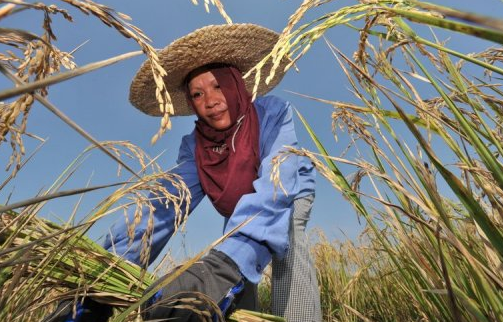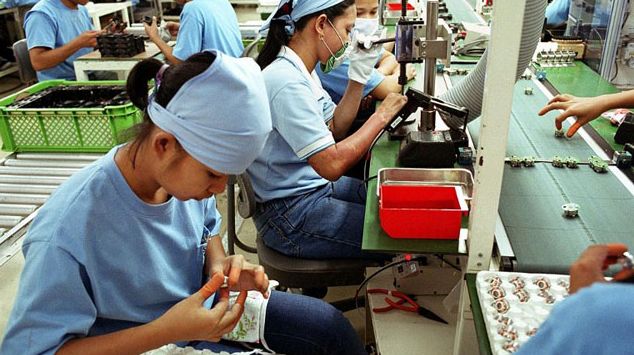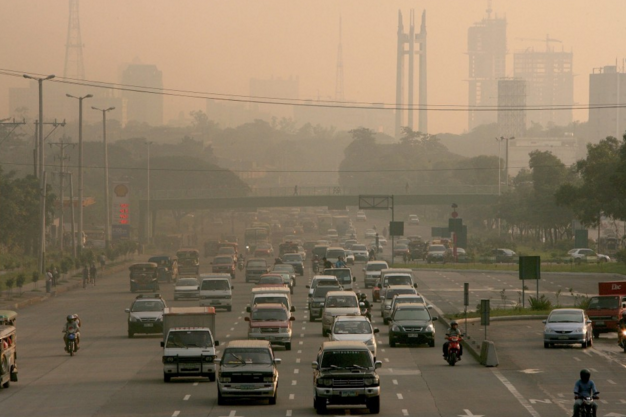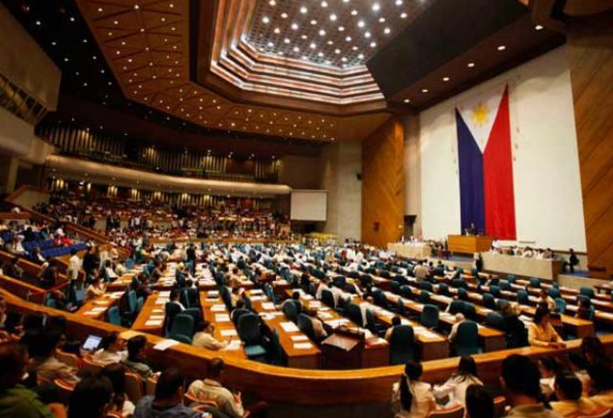At election time, candidates like to talk of change. Sobra na, tama na, palitan na! Tunay na pagbabago! are frequently used slogans. But why is it that the more things change, the more they stay the same? Could it be that elections in the Philippines are mostly about a change in personalities, with no real change agenda? Here are five types of change that if pursued correctly would truly transform lives in the Philippines.

Agricultural transformation
The Philippines will not transform itself into a prosperous economy unless our agricultural smallholders are transformed from subsistence farmers planting traditional crops into self-reliant producers of high value varieties. A large share of our labor pool (around 31%) is still employed in agriculture which accounts for only 11% of the economy.
Improving farm productivity and earnings is the first transformation needed in the Philippines. East Asian industrialization was built on the foundation of a productive farm sector. The Philippines has lagged behind other countries like China, Vietnam, Malaysia, Thailand and Indonesia in promoting growth in agriculture.
Investments are needed in research and development, technology, human resources, transport and rural infrastructure, supported by a sound legal environment that ensures contract enforcement and secures land rights. Government has to overcome its urban bias and support the sector, while moving from price subsidies to providing better social safety nets and services.

Industrial transformation
Growth without industrial transformation will only lead to a situation where households sit precariously above the poverty line, at risk of falling below it. Industry, and manufacturing in particular, has the capacity to offer high paying jobs for the broad, semi-skilled sections of the labor force.
Manufacturing not only has more linkages to other sectors of the economy, the jobs from it pay a lot more and add greater value to the economy compared to jobs in agriculture or services. To remain competitive, the sector has to upgrade itself, diversify and move up the value chain. It needs to avoid a ‘race to the bottom’ through contractualization and lax safety and environmental standards. The manufacturing renaissance that is occurring of late has to be accelerated even further to produce more inclusive growth.
Governance mechanisms needs to be developed whereby government is able to identify sub-sectors, in which there is a ‘revealed comparative advantage’, and encourage players to move into related products and services requiring similar productive capabilities. Labor market institutions could be developed that would provide ‘flexicurity’ that would give employers flexibility in hiring, while giving stability of incomes and employment to workers.

Energy transformation
As one of the most vulnerable countries to severe weather occurrences brought about by climate change, the Philippines needs to transition to a low carbon economy. It is projected to have the most carbon intensive energy mix in Asia by 2020 with about 56% of its power generated by coal fired power plants (up from 42.5% currently and 32% at year-end 2014) . This would be a consequence of the 23 coal plants that are going to be operational within the next five years to meet growing demand. In Luzon alone, coal would account for 75% of the energy mix by 2020. This will pose significant risks to health and the environment.
The current share of renewable sources of energy (geothermal, hydroelectric, wind and solar) is 25%, down from 32% of installed capacity at year-end 2014, and 26% is derived from gas up from 16% at year-end 2014, sourced from Malampaya, which will be depleted by 2024. Projects to import liquefied natural gas have been delayed. The use of coal to meet intermediate needs will become uneconomical due to low utilization, leading to inadequate recovery of investments.
A proper energy policy framework needs to be put in place that would factor in the mitigation cost of carbon emissions and meet the expected energy requirements of the country. This policy framework has to include the transport sector, which is the biggest energy consuming sector. Fuel diversification through biofuels and natural gas, and the propagation of electric vehicles needs to be pursued vigorously by government in the years ahead, supported by a comprehensive transport and land use plan.
 Social transformation
Social transformation
Between 2016 and 2050 the median age of the Philippines will rise from 24 years to 32 years, with the youth dependency ratio expected to fall from 1:2 to 1:3 during this time. Rather than 1 out of every 2 being in the workforce, there will be two out of every 3 Filipinos looking for work. This means more people potentially earning and contributing to the economy.
This ‘demographic dividend’ may only be reaped if we concentrate efforts in improving the availability, accessibility and quality of social services designed to build our human capital. Only by investing in our people, giving them equal opportunity to pursue their ambitions, can Philippine society become more inclusive.
This would mean providing well-targeted social insurance to families living below the poverty line to improve their nutritional intake and keep their children in school. The current program needs to improve its target mechanisms that currently allows non-poor households to make up to 30% of recipients. It also means addressing the gaps in health, education, housing and sanitation services.

Political transformation
The Philippine government, from its inception has been dominated by an aristocratic ruling class. Of the 178 dominant political families that occupied elective office in 2010, 100 or 56% were from wealthy landed elites, while 78 or 44% rose after the first EDSA people power uprising of 1986. These families occupied 68% of the seats in the house of representatives and 80% of the senate. About 91% of partylist representatives were millionaires, and 10 of them were from political clans.
About 94% of provinces (73 out of 80) had political dynasties in 2010. Six of these provinces were dominated by a single family. Seventeen provinces had a governor and congressman from the same family (eight of them had only one congressional district). This year, there are 558 candidates running unopposed, to fill national and local positions (there are 1,800 elective positions overall). Of this total, 32 are for congressmen, 215 for city or municipal mayor, 249 for city or municipal vice mayor, 31 for municipal councilor, 12 for governor, 11 for provincial vice-governor and eight for Sangguniang Panlalawigan.
The over-concentration of political power has led to monopolization of ownership in various sectors of the economy, including mining, logging, sugar, tobacco and property development. These families have links to media, banking and finance and tie-ups with local and foreign businesses. With such an incestuous relationship, “regulatory capture” by insiders prevents outsiders from participating in the system. It is time for us to realize that this form of political and economic inbreeding is no longer healthy. It is time to introduce political and electoral reforms that would democratize political positions in the country.
About The Author

Emmanuel Doy Santos
The author works as a development consultant and policy analyst in Adelaide, South Australia and Manila, Philippines. He is also the founder of the 2Klas Program, which equips inner city youth in Metro Manila with 21st Century skills. He has a Facebook page @CuspPH and tweets as @cusp_ph. He blogs and hosts a podcast on htttps://cusp-ph.blogspot.com.
5 Transformations Needed in the Philippines
At election time, candidates like to talk of change. Sobra na, tama na, palitan na! Tunay na pagbabago! are frequently used slogans. But why is it that the more things change, the more they stay the same? Could it be that elections in the Philippines are mostly about a change in personalities, with no real change agenda? Here are five types of change that if pursued correctly would truly transform lives in the Philippines.
Agricultural transformation
The Philippines will not transform itself into a prosperous economy unless our agricultural smallholders are transformed from subsistence farmers planting traditional crops into self-reliant producers of high value varieties. A large share of our labor pool (around 31%) is still employed in agriculture which accounts for only 11% of the economy.
Improving farm productivity and earnings is the first transformation needed in the Philippines. East Asian industrialization was built on the foundation of a productive farm sector. The Philippines has lagged behind other countries like China, Vietnam, Malaysia, Thailand and Indonesia in promoting growth in agriculture.
Investments are needed in research and development, technology, human resources, transport and rural infrastructure, supported by a sound legal environment that ensures contract enforcement and secures land rights. Government has to overcome its urban bias and support the sector, while moving from price subsidies to providing better social safety nets and services.
Industrial transformation
Growth without industrial transformation will only lead to a situation where households sit precariously above the poverty line, at risk of falling below it. Industry, and manufacturing in particular, has the capacity to offer high paying jobs for the broad, semi-skilled sections of the labor force.
Manufacturing not only has more linkages to other sectors of the economy, the jobs from it pay a lot more and add greater value to the economy compared to jobs in agriculture or services. To remain competitive, the sector has to upgrade itself, diversify and move up the value chain. It needs to avoid a ‘race to the bottom’ through contractualization and lax safety and environmental standards. The manufacturing renaissance that is occurring of late has to be accelerated even further to produce more inclusive growth.
Governance mechanisms needs to be developed whereby government is able to identify sub-sectors, in which there is a ‘revealed comparative advantage’, and encourage players to move into related products and services requiring similar productive capabilities. Labor market institutions could be developed that would provide ‘flexicurity’ that would give employers flexibility in hiring, while giving stability of incomes and employment to workers.
Energy transformation
As one of the most vulnerable countries to severe weather occurrences brought about by climate change, the Philippines needs to transition to a low carbon economy. It is projected to have the most carbon intensive energy mix in Asia by 2020 with about 56% of its power generated by coal fired power plants (up from 42.5% currently and 32% at year-end 2014) . This would be a consequence of the 23 coal plants that are going to be operational within the next five years to meet growing demand. In Luzon alone, coal would account for 75% of the energy mix by 2020. This will pose significant risks to health and the environment.
The current share of renewable sources of energy (geothermal, hydroelectric, wind and solar) is 25%, down from 32% of installed capacity at year-end 2014, and 26% is derived from gas up from 16% at year-end 2014, sourced from Malampaya, which will be depleted by 2024. Projects to import liquefied natural gas have been delayed. The use of coal to meet intermediate needs will become uneconomical due to low utilization, leading to inadequate recovery of investments.
A proper energy policy framework needs to be put in place that would factor in the mitigation cost of carbon emissions and meet the expected energy requirements of the country. This policy framework has to include the transport sector, which is the biggest energy consuming sector. Fuel diversification through biofuels and natural gas, and the propagation of electric vehicles needs to be pursued vigorously by government in the years ahead, supported by a comprehensive transport and land use plan.
Between 2016 and 2050 the median age of the Philippines will rise from 24 years to 32 years, with the youth dependency ratio expected to fall from 1:2 to 1:3 during this time. Rather than 1 out of every 2 being in the workforce, there will be two out of every 3 Filipinos looking for work. This means more people potentially earning and contributing to the economy.
This ‘demographic dividend’ may only be reaped if we concentrate efforts in improving the availability, accessibility and quality of social services designed to build our human capital. Only by investing in our people, giving them equal opportunity to pursue their ambitions, can Philippine society become more inclusive.
This would mean providing well-targeted social insurance to families living below the poverty line to improve their nutritional intake and keep their children in school. The current program needs to improve its target mechanisms that currently allows non-poor households to make up to 30% of recipients. It also means addressing the gaps in health, education, housing and sanitation services.
Political transformation
The Philippine government, from its inception has been dominated by an aristocratic ruling class. Of the 178 dominant political families that occupied elective office in 2010, 100 or 56% were from wealthy landed elites, while 78 or 44% rose after the first EDSA people power uprising of 1986. These families occupied 68% of the seats in the house of representatives and 80% of the senate. About 91% of partylist representatives were millionaires, and 10 of them were from political clans.
About 94% of provinces (73 out of 80) had political dynasties in 2010. Six of these provinces were dominated by a single family. Seventeen provinces had a governor and congressman from the same family (eight of them had only one congressional district). This year, there are 558 candidates running unopposed, to fill national and local positions (there are 1,800 elective positions overall). Of this total, 32 are for congressmen, 215 for city or municipal mayor, 249 for city or municipal vice mayor, 31 for municipal councilor, 12 for governor, 11 for provincial vice-governor and eight for Sangguniang Panlalawigan.
The over-concentration of political power has led to monopolization of ownership in various sectors of the economy, including mining, logging, sugar, tobacco and property development. These families have links to media, banking and finance and tie-ups with local and foreign businesses. With such an incestuous relationship, “regulatory capture” by insiders prevents outsiders from participating in the system. It is time for us to realize that this form of political and economic inbreeding is no longer healthy. It is time to introduce political and electoral reforms that would democratize political positions in the country.
Related Posts
Sen Pacquiao’s use of the Bible to justify his arguments is dangerous
Policy 101 for PDU30 (and friends)
Creative solutions to worsening conditions along EDSA: The 40 km speed limit for buses, etc. (Part1/2)
About The Author
Emmanuel Doy Santos
The author works as a development consultant and policy analyst in Adelaide, South Australia and Manila, Philippines. He is also the founder of the 2Klas Program, which equips inner city youth in Metro Manila with 21st Century skills. He has a Facebook page @CuspPH and tweets as @cusp_ph. He blogs and hosts a podcast on htttps://cusp-ph.blogspot.com.